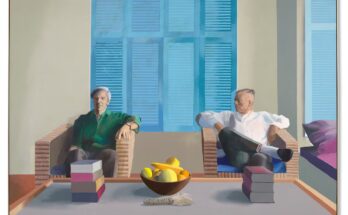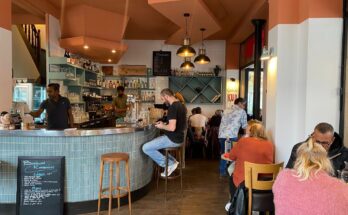A festive wall –mittera in Catalan- is the side wall of a building that separates it from the adjacent property. Neighbors usually don’t think about it unless they want to take advantage of it for some reason. If someone plans to do a work that concerns him, he can modify it in proportion to the right he has on the wall, with the consent of his neighbor and, logically, without preventing its use. The Civil Code dedicates some articles to regulate its use and in the event of a conflict more than one insurer recommends contacting a mediator to resolve it. These dividing surfaces are not designed to be visible, but many, and under many circumstances, are left bare, exposed and… they are ugly, they attack the urban landscape. In Barcelona there are almost six thousand visible party walls of which, according to the Mies van der Rohe Foundation, 348 are permanent and exceed 100 square metres. That is to say, there will never be a new building that ends up hiding them. To improve the city’s public spaces, the City Council has a program to transform them.
25 years ago, the Barcelona Mitgeres Remodeling Plan was launched to eliminate these urban discontinuities. A policy of subsidies with the financial contribution of neighbors. And it is in this context that in 2024 the Municipality and the Foundation announced an international competition for young architects, born since January 1989, to intervene on ten dividing walls, of which they were left exposed. One in each of the city’s neighborhoods. It will be another of the celebrations planned for 2026, when Barcelona will be the World Capital of Architecture.
The competition jury received 439 proposals from 51 countries. It’s not a big-ticket race. According to the regulations, the first prize was awarded with 3 thousand euros and the consultancy to follow the work with another three thousand. Naturally the authors of the winning project will be invited to the opening day of the work. In these days, until December 14, in what was the loading and unloading dock of the Gustavo Gili publishing house, an open-air warehouse, a series of panels show the winning projects. A complete virtual exhibition with the 343 proposals examined by the jury is also open on the Barcelona 2026 website. This is not a simple camouflage maneuver with murals, graffiti or trompe l’oeil, like the splendid one in Piazza Pablo Neruda. Balconies of Barcelonaas it is called, it was inaugurated in 1992 and simulates a facade in whose imaginary balconies live 26 characters from the city’s history.
The theory of all this is expressed simply by María Buhigas, chief architect of the Municipality: “it is a small architectural gesture that represents a huge transformation”. In the video of the exhibition, he believes that all this will be a legacy of the capital of 2026. On the day I went, the Architecture student in charge of visitor service, Daniel Fernández, defended the idea of the competition with conviction and kindness. It wasn’t just an aesthetic challenge, it also meant an improvement in homes. “The city wins and the neighbors win.” Some neighbors who are not separated from decisions. They have a number of powers over the winning project. For example, he explains, they can refuse to have one of the windows opened in their apartment and for which they will have to pay. This explains that, although the winning proposal contains eight, the final project has three fewer.
The fact that they become facades, and not just painted ones, represents improvements of many kinds. For example, if you thicken the wall, you improve thermal inertia, making it difficult for heat and cold to pass through, which means less spending on heating or air conditioning. “The use of vegetation is an important passive climate element.” And when faced with a façade where birds’ nests have been incorporated, Fernández comments humorously, you might think you were in Cerdanya. The inclusion of nests was optional in the bases.
The buildings where the intervention will be carried out are in Piazza Martina Castells; the garden on Antiga Horta street, that of Marià Manent and that of Caterina Albert; Charlot and Grau squares, as well as Quetzal 5-7 streets, Madrid 161 avenue, Moratín 6 and Espronceda 321f. Its ten unpleasant walls will become real facades that interact with the landscape that surrounds them and improve the ventilation of the homes. Depending on the personality of each project, there are different types of openings, terraces, corridors, vertical gardens and some take advantage of solar panels without just thinking about energy saving. They are an aesthetic, highly visible contour.



